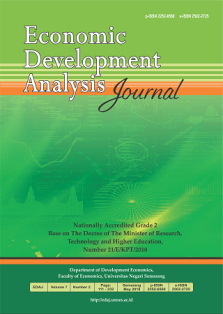Targeting and Impact of National Health Insurance Program in Indonesia
Abstract
National Health Insurance System (NHIS) program in Indonesia has been launched since 2014,
and government spending to support the program has allocated nearly 40% of MoH budget,
especially for the NHIS subsidies. This study examined the distribution of NHIS subsidized
beneficiaries which associated with the household income distribution, and also studied about the
utilization rate of health care facilities among the residents since the NHIS program has introduced
to change citizens’ health seeking behaviour from traditional services to health facilities. Using the
2016 Susenas data, this study employed the benefit incidence analysis method to measure the
distribution of NHIS-subsidized group, and logistic regression analysis to determine the health care
seeking behavior. The result shows that households in higher income (quantile III-V) get benefit
from government subsidy on NHIS program. It indicated there was a leakage on government
budget that not belong to the target (quantile I and II). Then, logistic regression analysis found that
people with higher income and having health insurance tend to visit health care facilities more
frequently than lower income group and uninsured people. This can be concluded that health
insurance ownership is one of the important factors to influence people visiting health care
facilities.


